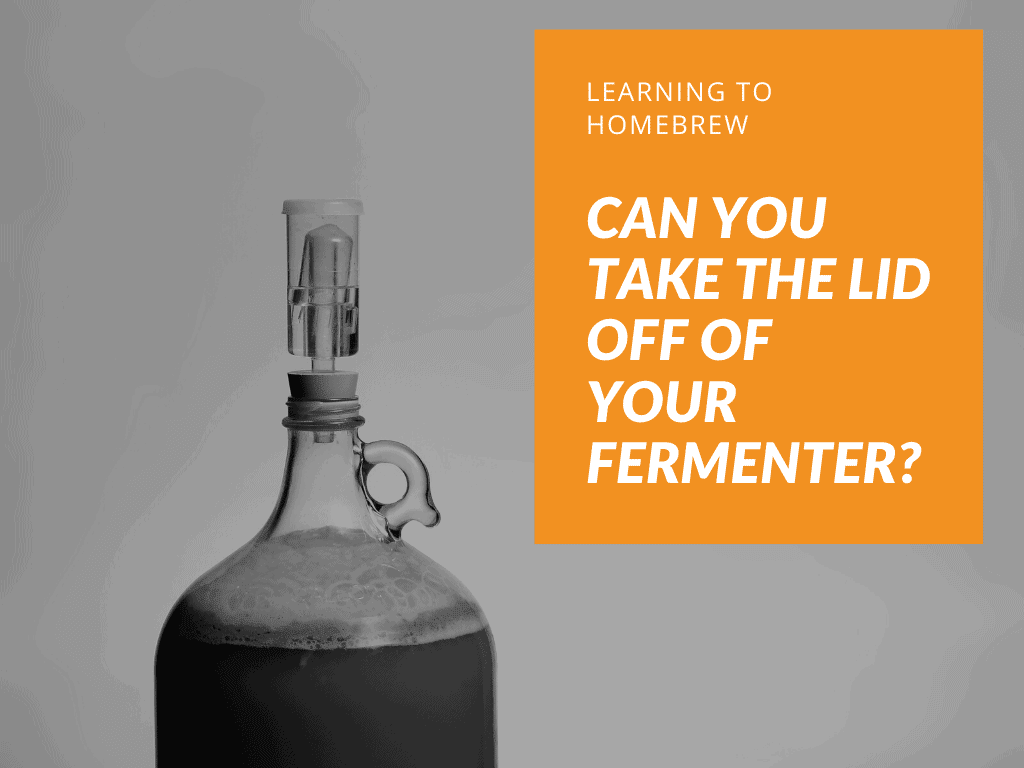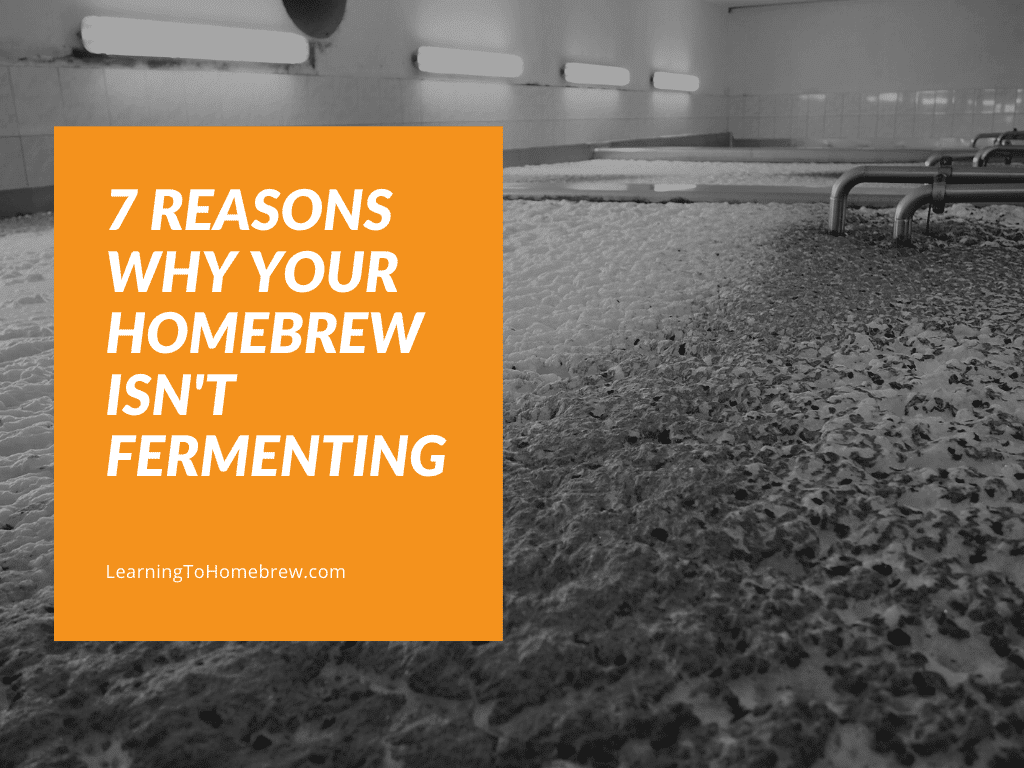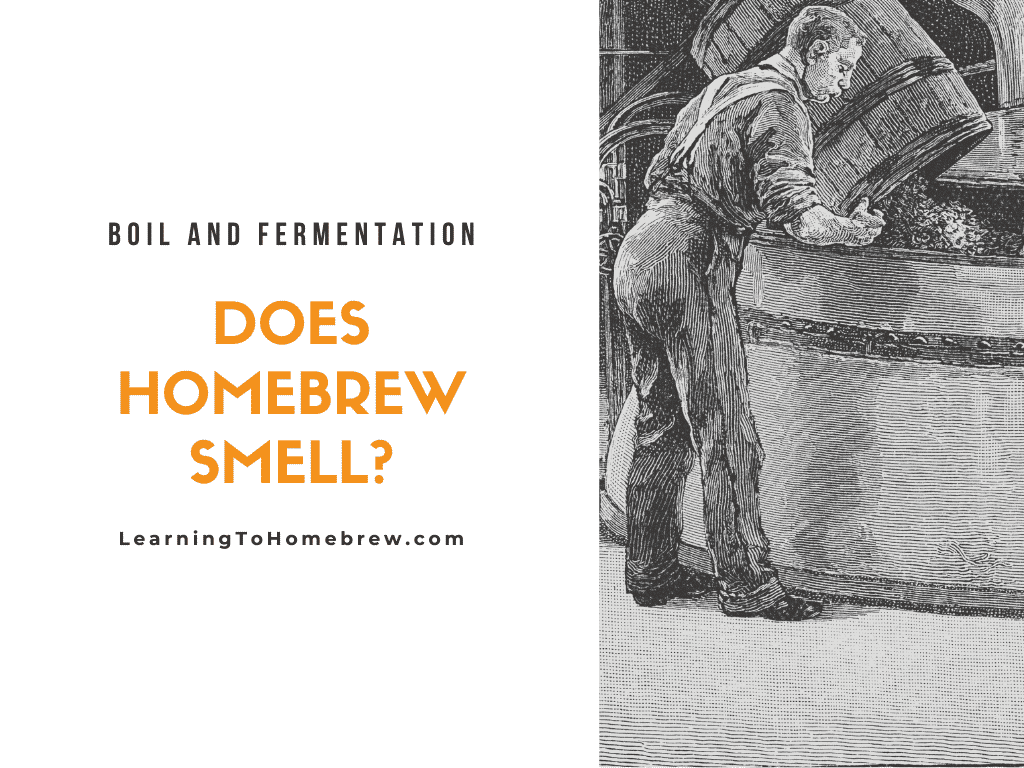Homebrewers are not always known for being a patient bunch and most are anxious to know when the primary fermentation is done for their beer so that they can get to drinking it! Fortunately, there are many visual signals and measurements that can be taken to ensure that your primary fermentation is done and ready to move to the next step.
Primary fermentation includes a period of active fermentation that lasts about 48-72 hours and is considered done when hydrometer readings are stable. Typically, an ale will stay in the primary fermenter for a period of 1-3 weeks total and will then will either be moved to a secondary fermenter for conditioning or bottled.
It is quite easy to determine when primary fermentation has technically finished but there are a few variables to consider when it comes to answering the question of how long the primary fermentation lasts. Let’s dive into the details and learn more about this important stage of homebrewing!
Topics We Cover
How long does primary fermentation take for beer?
Fermentation is the most exciting and visually stunning part of the entire homebrewing process and it plays an incredibly important role in the overall outcome of your beer’s flavor, aroma, and mouthfeel.
While every homebrewer agrees that primary fermentation occurs when you transfer your wort to a fermenter and add yeast, it’s a little more difficult to answer how long it lasts. That’s because even though the bulk of the fermentation process occurs within a few days, it is common for brewers to leave their beer in the primary fermenter for a period ranging from one week to several months.
Typically, the active fermentation stage of primary fermentation will last between 2-3 days and the beer will stay in the primary fermenter for 1-4 weeks. After primary fermentation, the beer will either be moved to a secondary fermenter, bottled, or kegged. Simple ales normally do not require secondary fermentation while larger, more complex beers may need a secondary fermenter to help with conditioning, dry hopping, flavor additions, or clarity.
I’ve created an entire resource about whether or not secondary fermentation is really necessary if you want to check it out!
How long does active fermentation last?
The first stage of primary fermentation, the active stage, is by far the most exciting to watch and experience. As a homebrewer, it is simply amazing to watch the process of yeast turning a pile of ingredients into delicious beer!
Active fermentation normally starts within about 12 hours of pitching the yeast and it will last about 48-72 hours from that point. Variables such as beer recipe, yeast strain, and fermentation temperature will all impact the length of active fermentation.
Generally speaking, one of the biggest variables for active fermentation length is the temperature.
While all yeast have an ideal temperature range that they like to work in, it’s almost always true that the higher the temperature, the faster the yeast will work. This is because higher temperatures allow the yeast to be more active, reproduce faster, and generally get their work done faster.
One big issue that many new homebrewers have is that they sometimes think once active fermentation is over with then it must be time to bottle their beer. Unfortunately, bottling too soon can cause all kinds of problems, including over-carbonation, so it’s important to be sure that primary fermentation is complete before moving on to the next step.
Let’s see what we need to learn to know when fermentation is actually done.
How do I know primary fermentation is complete?
There are both visual cues and specific measurements that will show you when your fermentation is complete.
When all signs of active fermentation have ceased, yeast has fallen out of the beer, and you have stable hydrometer readings for several days in a row you can be sure that your primary fermentation is complete.
We’ll discuss the hydrometer readings in the next section, but for now, let’s focus on the visual cues. We just talked about active fermentation which is the most visible sign that your beer is fermenting correctly and on its way to becoming awesome beer.
Once all of that activity has slowed down, how can you be sure that fermentation is actually ending?
Here are visual signs that fermentation is complete:
- There will be little or no bubbling from the airlock. Some bubbling is normal, even after fermentation is complete, as carbon dioxide periodically escapes from the beer liquid.
- All or most of the foam will dissipate from the headspace of the fermenter.
- Your beer will stop swirling and moving.
- The beer will start to look clearer as yeast falls out of suspension.
- The color of the beer can brighten as it becomes clearer.
- A large yeast cake will form at the bottom of the fermenter on top of the trub.
I should point out that even though these clues are very helpful, they are not the determining factor on whether or not primary fermentation is complete.
To truly know the answer to that question, you will need to take some hydrometer samples and check the measurements.
How do you know when your fermentation is done with a hydrometer?
A hydrometer is a simple tool used to compare the density of any liquid to the density of water.
For homebrewers, this measurement is critical to determining when your fermentation is done because it will allow you to see when the yeast has converted all of the sugar in the wort to alcohol and carbon dioxide.
You will know that your fermentation is done with a hydrometer when the readings are the same for multiple days in a row and they are in line with your recipe’s estimated final gravity reading.
Ideally, you took an original gravity reading just before you pitched your yeast. This reading will tell you how much sugar is present in your wort and typically lies between 1.035 and 1.060.
If you used a recipe kit then this information will often be listed in the instructions for reference. The final gravity reading will typically lie between 1.015 and 1.005 or about 20-25% of your beer’s original gravity reading. This number shows that there is very little sugar present in the beer.
One thing to point out is that hydrometers are normally calibrated to work at a certain temperature (usually 59 °F) so if it is extraordinarily hot or cold in your room then you will need to adjust. Here is a handy hydrometer temperature correction chart to use!
What happens if you ferment beer too long?
Technically speaking, you can’t ferment a beer for too long because once the sugars have been eaten up active fermentation will end and there will be no danger of the process continuing past that point.
With that said, there can be negative consequences to leaving your beer inside the primary fermenter for too long.
After a certain amount of time, the yeast inside the beer will start to expire in a process called autolysis which essentially means ‘self-destruction.’ The yeast cells burst apart when they die and the contents released can contribute to several off-flavors, none of which are pleasant. Normally, it takes at least several months in the primary for this to happen, but it can happen more quickly depending on a few variables.
Fortunately, this problem really isn’t as common as you might think and there are many things that you can do to help prevent this from happening in the first place.
Here are some good best practices to avoid having issues with autolysis in your homebrew:
- Use a secondary fermenter if you plan to condition or store your beer in the fermenter longer than a month.
- Keep your fermenter temperature close to the ideal fermentation temperature (on the lower side of room temperature) even after active fermentation is complete. Or transfer it to an even cooler space, such as a cellar, for the last couple of weeks in the primary.
- Ensure that you have healthy yeast at the start of fermentation by creating a strong yeast starter.
- Avoid re-pitching yeast from previous batches over and over again.
For the web story version of this article click here!





